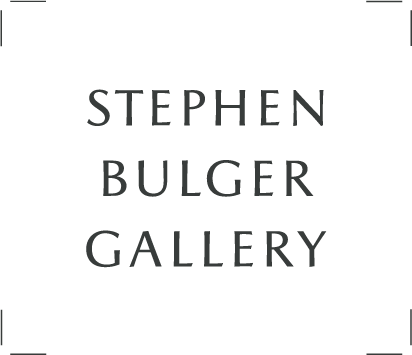Stephen Bulger Gallery is pleased to present Distant Early Warning, our first solo exhibition of work by Louie Palu.
Distant Early Warning provides a window into the evolving state of the militarization of the Arctic, documenting the fragmented legacies of the Cold War along increased military presence of countries wishing to stake a claim in the region. The changes are exacerbated by climate change with the fact the area is warming more rapidly than any other part of the world. Working on this project since 2015, Palu has noticed a shift in the geopolitical tensions and changing life of Indigenous communities.
One of the justifications used in the militarization of the area is the security narrative – the idea that once the ice melts, natural resources like oil and new shipping routes will become part of a new northern economy. Viewed as the final frontier, many countries in search of natural resources or new economic opportunities want to stake their claim.
One of the first moments of military activity in the Arctic was the creation of a radar system called the Distant Early Warning Line (DEW) built by the United States and Canada in the 1950s. This system operated as an active frontline from Alaska, across Canada, to Greenland, designed to detect an attack from the Soviet Union. To stake their claim to the region in 2007, a Russian submarine planted a flag under the North Pole claiming that the Russian continental shelf extends up to the North Pole. In response the Arctic nations of Canada, Finland, Greenland (Denmark), Iceland, Norway, Russia, Sweden, and the United States have increased their military influence to maintain secure access to the region.
For Canada, a country that sits mostly in the sub-Arctic and high Arctic, the polar region holds a place of wonder and mystery in the collective imagination of the nation. In the south, it is often understood through maps, clichés of icebergs and wild animals, outdated stereotypes of Indigenous peoples, and scientific statistics. Despite this, the uncharted nature of the region provides a blank slate for invented narratives and fantasies around economic gain.
With this work, Palu challenges people’s perceptions and creates a shift in awareness about the region. What unfolds in this fragile environment should encourage us to ask questions about a critically important part of our planet. The Arctic faces an unknown future that will reshape our environment and redefine our ideas of security and sustainability in the face of a warming planet that will affect us all.
Palu is a photographer and filmmaker whose work has examined social political issues, such as climate change, human rights, and conflict for 30-years. Palu’s projects have been selected for a Guggenheim Fellowship and World Press Photo Awards. His work has appeared in National Geographic Magazine, The New York Times, The Washington Post, The Guardian, Der Spiegel, Le Figaro, El Pais, and The Globe and Mail. Palu’s work has been exhibited in galleries, museums, and festivals worldwide and is held in numerous collections including National Gallery of Canada, Ottawa; Library and Archives of Canada, Ottawa; the Library of Congress, Washington, D.C; Beinecke Rare Book & Manuscript Library, Yale University, Connecticut; Museum of Fine Arts Houston; George Eastman Museum, New York; National Gallery of Art, Washington, D.C.; Harry Ransom Center, Texas; Museum of Fine Arts Boston; Smithsonian National Museum of American History, Washington, D.C.; Imperial War Museum, London, England. His films have been screened at many festivals including the Hot Docs, Barcelona, and Munich International Documentary Film Festivals.
Palu would like to thank the Albin O. Kuhn Library Gallery at the University of Maryland, Baltimore County, USA and Curator of Exhibitions Emily Hauver for the assistance in making this exhibition possible. Louie Palu’s work was supported by funding from the John Simon Guggenheim Memorial Foundation, National Geographic Society, and Pulitzer Center.


